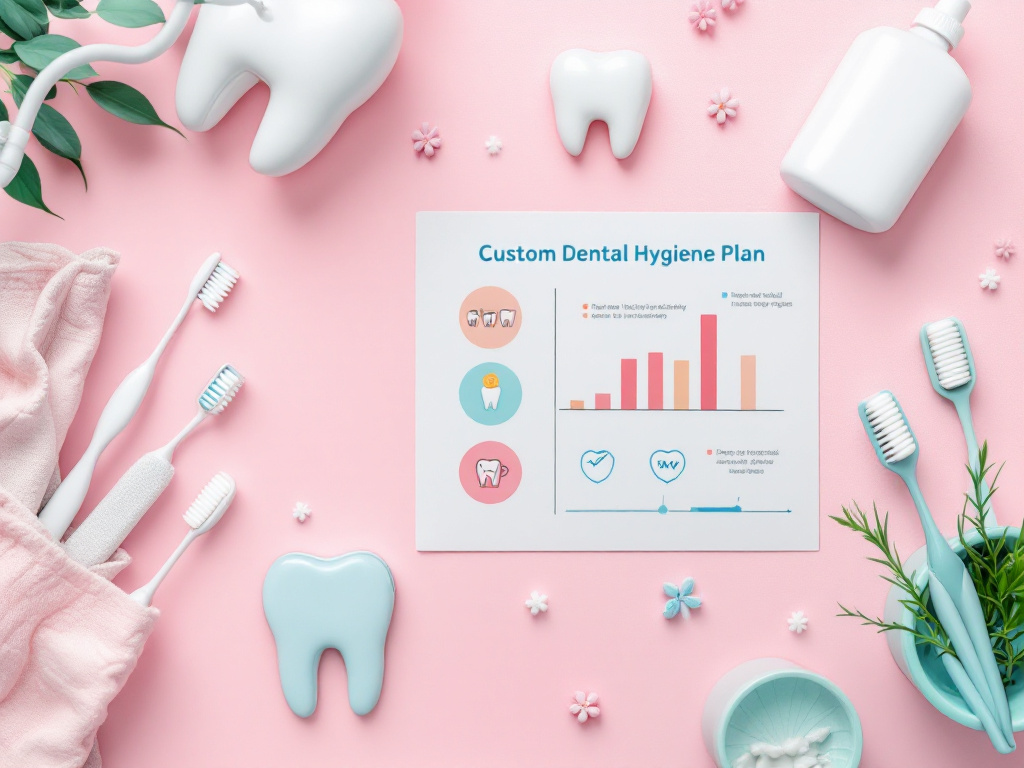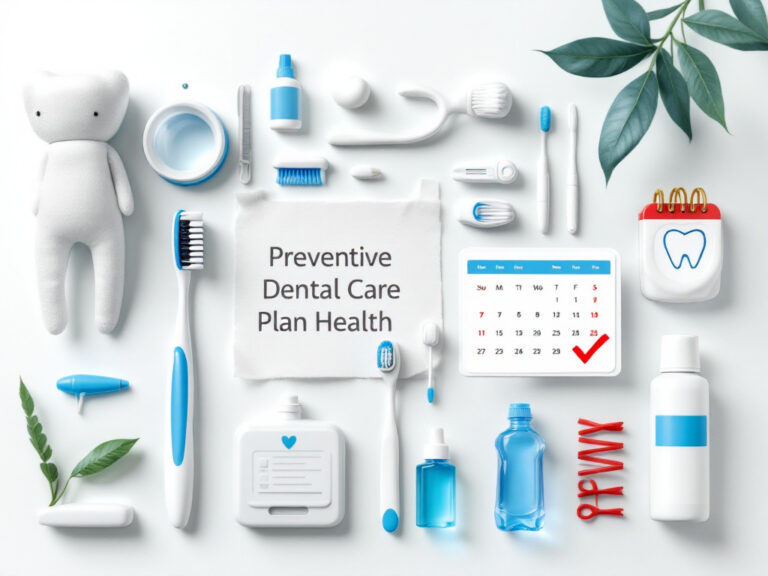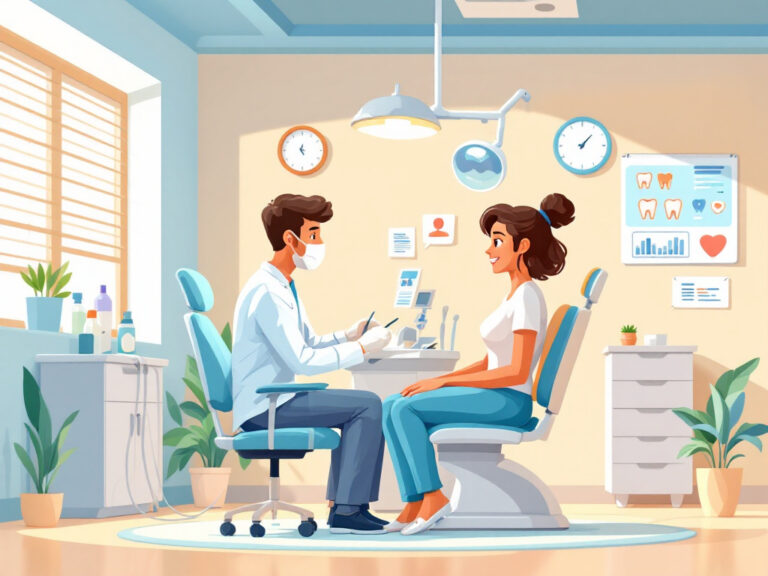Assess your current oral health
Before you build a custom dental hygiene plan, take stock of your oral health. Understanding where you stand helps you and your dental team pinpoint areas that need attention and set realistic goals for improvement.
Evaluate your dental history
Review past treatments and any chronic issues. Have you experienced sensitivity, gum inflammation, or frequent cavities? Documenting your medical history, including medications and conditions such as diabetes or heart disease, gives your dentist important context for crafting personalized recommendations [1].
Identify personal preferences
Consider your comfort level with different tools and techniques. Do you prefer an electric toothbrush over a manual one? Are flavored or alcohol-free mouthwashes more appealing? Sharing these preferences ensures your regimen fits seamlessly into your daily routine.
Consider lifestyle factors
Your diet, sleep habits, stress level, and smoking or vaping status all influence oral health. A nutrition-rich diet and adequate hydration support enamel strength, while tobacco use and high-sugar diets increase risks. By factoring in these lifestyle choices, your plan becomes more effective and sustainable.
Plan professional evaluations
Regular professional assessments are key to a preventive approach. By scheduling targeted appointments, you catch issues early and fine-tune your hygiene plan based on expert feedback.
Schedule a comprehensive dental exam
Kick off your plan with a thorough checkup. A comprehensive dental assessment includes X-rays, visual inspection, and charting of existing restorations. This baseline helps track changes over time.
Include routine dental checkup
Follow your dentist’s recommendation for routine dental checkup intervals, typically every six months. Consistent exams help detect small concerns—like minor enamel erosion—before they become major problems.
Add oral cancer screening
An annual oral cancer screening is essential, especially if you use tobacco or alcohol regularly. Early detection dramatically improves treatment outcomes.
Develop your hygiene routine
A strong at-home routine forms the backbone of your custom plan. Consistency and proper technique ensure you maintain results between professional visits.
Choose effective brushing techniques
Use a soft-bristled brush and fluoride toothpaste twice daily. Hold your brush at a 45-degree angle to your gumline and apply gentle, circular strokes. Replace your brush or brush head every three months or sooner if bristles fray.
Integrate flossing daily
Floss once a day to remove plaque where your brush can’t reach. Gently glide between teeth, hugging each tooth’s curve to clear debris and bacteria.
Use mouthwash appropriately
An antiseptic or fluoride mouthwash can reduce bacterial buildup and strengthen enamel. Rinse for 30 seconds after brushing and flossing, but avoid eating or drinking for 30 minutes afterward to maximize benefits.
Customize preventive treatments
Professional preventive treatments complement your at-home efforts and target specific risk areas.
Professional teeth cleaning
A professional cleaning removes stubborn tartar and plaque. Our professional teeth cleaning services use gentle ultrasonic or hand scaling tools for a comfortable experience and healthier gums.
Fluoride treatment for adults
If you’re prone to sensitivity or decay, a fluoride treatment for adults can harden enamel and reduce cavities. In-office applications provide concentrated protection beyond toothpaste.
Dental sealant application
Sealants are thin coatings applied to molars’ chewing surfaces, blocking bacteria from settling in grooves. A quick dental sealant application session safeguards your smile, especially if you’ve had past decay.
Address specific concerns
Every smile has unique challenges. Targeted interventions ensure your plan covers all bases.
Manage tooth sensitivity
If you shudder at hot or cold foods, discuss a tooth sensitivity treatment. Options include desensitizing toothpastes, varnishes, or in-office procedures to block exposed dentin.
Prevent and reverse decay
Diet tweaks—like reducing sugary snacks and sipping water after meals—can slow acid attacks. For early enamel lesions, your dentist may recommend remineralizing gels or targeted fluoride trays to reverse decay without drilling.
Evaluate gum health
Bleeding or swollen gums signal inflammation. A gum disease evaluation identifies pockets and detects early periodontitis. Timely care—such as scaling and root planing—can halt progression and preserve supporting bone.
Monitor and adjust plan
Your oral health evolves with age and circumstances. Regular review keeps your plan on track and responsive.
Track progress regularly
Keep a journal or use a dental app to note changes in sensitivity, gum bleeding, or new staining. Sharing these updates at appointments lets your team tweak recommendations based on real-world results.
Adapt to changing needs
Life events—pregnancy, medications, orthodontics—or changes in diet and stress can alter your oral health. Revisit your custom dental hygiene plan at least once a year, or more often if you notice new issues.
Choose a supportive dentist
Finding the right practice ensures your plan is executed with expertise and care.
Find an insurance accepted office
Save time and money by selecting an insurance accepted dental office. Our team guides you through coverage for exams, cleanings, and preventive treatments.
Seek a gentle dentist for families
If comfort matters, look for a gentle dentist for families. Techniques like warm blankets, noise-cancelling headphones, and soothing chairside manner reduce anxiety for adults and children alike.
Look for affordable preventive dentistry
Preventive care is an investment in your future. An affordable preventive dentistry focus helps you maintain oral wellness without financial strain.
Commit to long-term wellness
A custom dental hygiene plan is not a quick fix but a lifelong partnership between you and your dental team.
Embrace accountability and support
Share your goals and challenges with your hygienist and dentist. They can send reminders, offer tips, or adjust appointments to keep you on track.
Schedule periodontal maintenance program
If you’ve had gum therapy or periodontitis, a periodontal maintenance program ensures specialized cleanings at recommended intervals, typically every three to four months, to prevent recurrence [2].
Continue professional dental hygiene services
Regular visits for professional dental hygiene services reinforce healthy habits, remove buildup you might miss, and provide ongoing guidance as your needs evolve.
Conclusion and next steps
A custom dental hygiene plan aligns daily habits, professional care, and preventive treatments to protect and enhance your smile. By assessing your oral health, integrating targeted therapies, and partnering with a trusted dental team, you set the stage for lasting results. Take the first step today: schedule your new patient dental exam and begin transforming your smile with a plan designed just for you.







